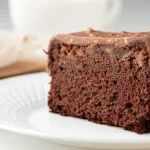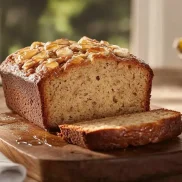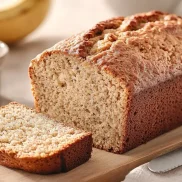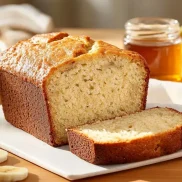Chocolate sheet cakes have been a favorite dessert choice for decades, thanks to their simplicity, rich flavor, and ability to please a crowd. But when you combine the creamy goodness of kefir with chocolate, you get a cake that not only tastes incredible but also offers unexpected health benefits. This fusion creates a delightful dessert that is both indulgent and wholesome. Whether you’re an experienced baker or someone just starting in the kitchen, a chocolate kefir sheet cake is an excellent recipe to explore. It adds a unique twist to the traditional chocolate cake while delivering a moist and tender texture that’s hard to beat.
Table of Contents
Introduction to Chocolate Kefir Sheet Cake
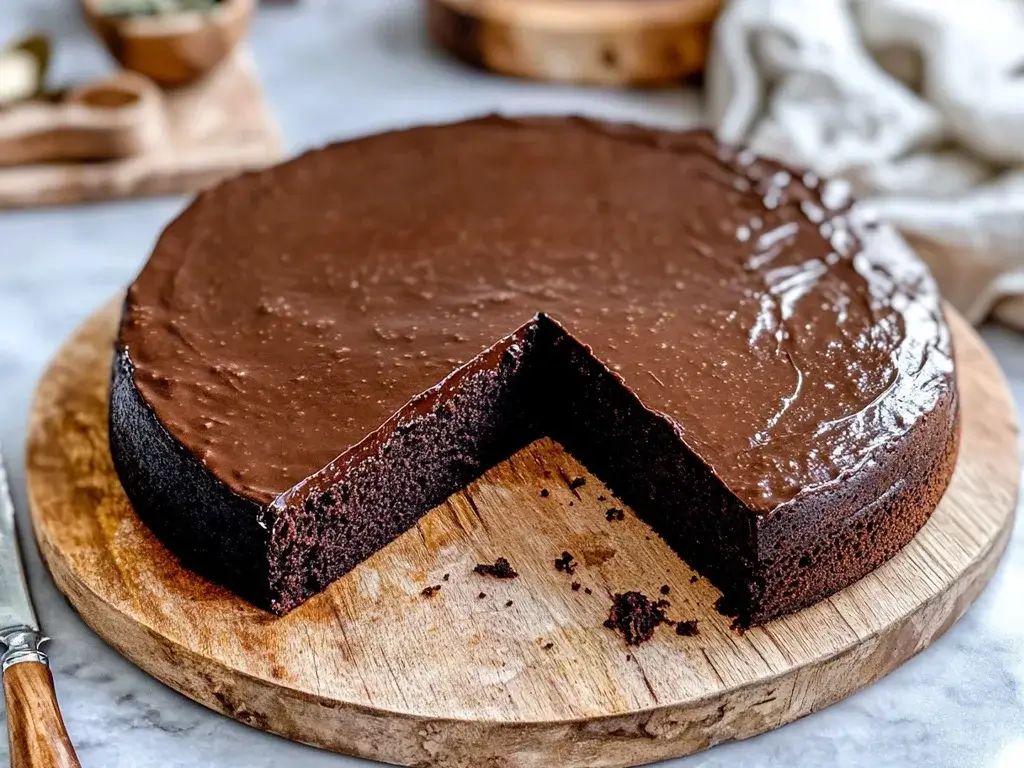
Chocolate kefir sheet cake is a modern variation of the classic sheet cake that uses kefir as a star ingredient. Sheet cakes are known for their large, rectangular shape, making them perfect for serving big gatherings or celebrations. By incorporating kefir, a probiotic-rich fermented milk drink, this dessert stands out for its light texture, tangy undertones, and nutrient-dense qualities.
Kefir has a long history, originating from the Caucasus Mountains, where it has been consumed for centuries as a health elixir. The natural fermentation process of kefir enhances its nutritional content, offering vitamins, minerals, and beneficial probiotics. When used in baking, kefir interacts with other ingredients, like flour and baking soda, to create a fluffy and moist cake. The subtle tanginess of kefir beautifully complements the rich, velvety notes of chocolate, producing a balanced and irresistible dessert.
Whether you’re baking for a birthday, potluck, or simply to treat yourself, a chocolate kefir sheet cake checks all the boxes. It’s simple to prepare, easy to transport, and versatile enough to suit various dietary preferences with minor adjustments.
What is a Chocolate Kefir Sheet Cake?
A chocolate kefir sheet cake is essentially a large, flat cake baked in a rectangular pan that features kefir as a key ingredient. The combination of kefir and chocolate might seem surprising, but it works wonders in the baking process. The kefir’s natural acidity reacts with leavening agents like baking soda, causing the batter to rise beautifully while keeping the cake soft and tender.
At its core, this cake contains basic ingredients like flour, sugar, cocoa powder, eggs, and fats, but it’s the kefir that makes all the difference. Its creamy consistency adds moisture to the batter, preventing the cake from drying out, while its probiotics add an unexpected health boost. The result is a rich, decadent cake with a delicate crumb and a slightly tangy finish that enhances the chocolate’s depth of flavor.
One of the best things about a chocolate kefir sheet cake is its versatility. You can top it with a variety of frostings, such as a classic chocolate ganache, cream cheese frosting, or even a light kefir-based glaze. The sheet cake format also makes it incredibly easy to decorate for any occasion, whether you keep it simple or add colorful toppings like sprinkles, nuts, or fresh fruit.
Why is Kefir a Key Ingredient in Baking?
Kefir plays a unique and crucial role in baking, especially when it comes to cakes and other baked goods. It is not just another dairy product; kefir is a powerhouse of nutrients that brings both flavor and function to recipes.
First and foremost, kefir is a natural leavening agent. The acidity in kefir reacts with baking soda, releasing carbon dioxide bubbles that help the cake rise. This reaction creates a light, airy texture that is essential for a perfect chocolate sheet cake.
Kefir also adds moisture to baked goods, ensuring a tender crumb and preventing dryness. Unlike buttermilk or yogurt, kefir has a thinner consistency, making it easier to incorporate into batters and doughs. The result is a cake that stays soft and fresh for longer periods.
From a flavor perspective, kefir adds a subtle tang that balances the sweetness of desserts. When combined with chocolate, this tang enhances the depth and richness of the cocoa, making the cake more flavorful without being overwhelmingly sweet.
Moreover, kefir brings significant health benefits to the table. It is loaded with probiotics, which support gut health, as well as essential vitamins like B12, calcium, and magnesium. Baking with kefir allows you to create a dessert that is not only delicious but also nutritious.
For bakers looking for dairy-free or plant-based alternatives, kefir is also available in non-dairy varieties like coconut or almond kefir. These options retain the same tangy properties and baking benefits, ensuring that everyone can enjoy a slice of chocolate kefir sheet cake, regardless of dietary preferences.
Essential Ingredients for Chocolate Kefir Sheet Cake
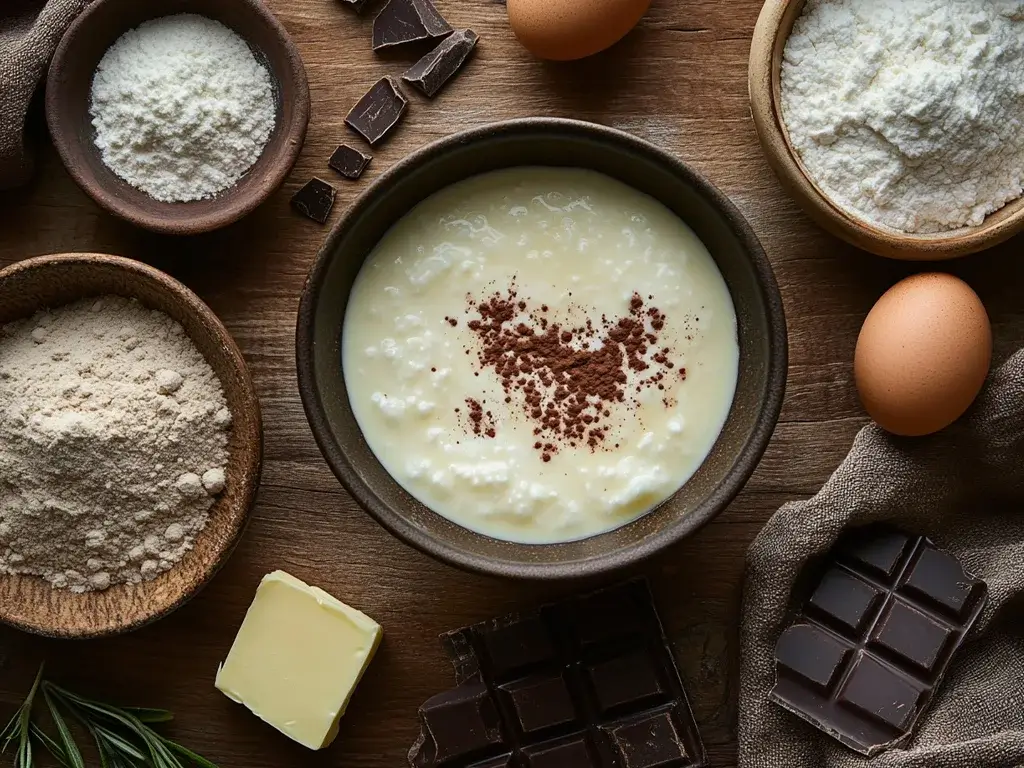
A great chocolate kefir sheet cake begins with the right ingredients. While the recipe is simple, each component plays a key role in achieving the perfect flavor, texture, and health benefits. Understanding how to choose the best options ensures that your cake turns out delicious, moist, and satisfying every time.
Selecting the Right Type of Kefir
Kefir is the star of this recipe, so selecting the right kind is essential. Kefir is a fermented milk drink that is naturally rich in probiotics, vitamins, and minerals. It adds moisture to the batter, a subtle tang to the flavor, and lightness to the texture.
Dairy Kefir vs. Non-Dairy Kefir: Pros and Cons
When it comes to kefir, there are two main types: dairy kefir and non-dairy kefir. Both options have their benefits, and the choice depends on personal preference or dietary needs.
| Type of Kefir | Pros | Cons |
|---|---|---|
| Dairy Kefir | – Creamy texture and rich flavor | – Not suitable for lactose-intolerant people |
| – Natural source of protein and calcium | – Higher calorie content | |
| Non-Dairy Kefir | – Suitable for vegans and lactose-intolerant | – May lack the creaminess of dairy kefir |
| – Lower in calories | – Fewer probiotics compared to dairy kefir |
Dairy kefir works exceptionally well in baking because of its creamy consistency and full-bodied flavor. However, for those following a plant-based diet, non-dairy kefir options like coconut, almond, or oat kefir are fantastic alternatives. These options still provide the tanginess and moisture needed for the recipe while accommodating dietary restrictions.
Homemade Kefir vs. Store-Bought Kefir
Another choice to consider is whether to use homemade or store-bought kefir. Both have unique qualities, and the decision depends on convenience and taste.
- Homemade Kefir: Making kefir at home gives you complete control over the fermentation process, ensuring a fresh and natural product. It allows you to customize the flavor and thickness of the kefir.
- Store-Bought Kefir: For those who want convenience, store-bought kefir is a great option. Look for brands that use minimal additives and preservatives. Organic options tend to have a better flavor and higher probiotic content.
Whichever option you choose, ensure the kefir is fresh, tangy, and free from excessive sweeteners, as these can alter the flavor of your chocolate kefir sheet cake.
Choosing the Best Chocolate for Your Cake
Chocolate is a defining ingredient in this recipe, so it’s important to choose high-quality options for the best results. The right chocolate enhances the depth of flavor and gives the cake its rich, decadent taste.
Dark Chocolate vs. Cocoa Powder
When baking a chocolate kefir sheet cake, you’ll typically use either dark chocolate, cocoa powder, or a mix of both. Each option adds unique qualities to the cake:
- Dark Chocolate: Using melted dark chocolate provides a richer and more intense chocolate flavor. It adds moisture and a smooth texture to the batter. Aim for dark chocolate with at least 60% cocoa content for the best results.
- Cocoa Powder: Cocoa powder, on the other hand, creates a lighter texture and a slightly drier crumb. Dutch-processed cocoa powder gives a milder, smoother flavor, while natural cocoa powder adds a more robust, acidic chocolate taste.
If you’re looking for a balance of flavor and texture, combining dark chocolate with cocoa powder can give you the best of both worlds.
Organic and High-Quality Chocolate Sources
Choosing organic or high-quality chocolate ensures a more authentic flavor and avoids unnecessary additives. Look for the following when purchasing chocolate:
- Organic Certification: Guarantees that the chocolate is free from synthetic chemicals and artificial flavorings.
- Fair Trade Chocolate: Supports ethical sourcing practices and ensures high-quality ingredients.
- Minimal Ingredients: Opt for chocolate with a short ingredient list, focusing on cocoa solids, cocoa butter, and minimal sugar.
Premium chocolate brands and organic cocoa powders may cost a bit more, but they elevate the overall taste and quality of your cake.
Key Flour Options for the Perfect Texture
The type of flour you choose significantly impacts the texture of your chocolate kefir sheet cake. The right flour creates a tender crumb while supporting the structure of the cake.
All-Purpose Flour vs. Cake Flour
- All-Purpose Flour: This is the most common choice for sheet cakes. It provides a balanced texture—not too dense and not too light—making it ideal for a wide range of baked goods.
- Cake Flour: For an even softer and more delicate crumb, cake flour is a fantastic option. It has a lower protein content, which reduces gluten formation and results in a finer, more tender cake.
If you want the best of both worlds, you can blend all-purpose flour and cake flour to achieve the perfect texture.
Gluten-Free Alternatives for Chocolate Kefir Cakes
For those following a gluten-free diet, several flour alternatives can replace traditional wheat flour without compromising the cake’s quality. Some great options include:
- Almond Flour: Adds a subtle nutty flavor and moisture to the cake.
- Rice Flour: Provides a light, soft texture that’s similar to all-purpose flour.
- Oat Flour: Gives a wholesome flavor and works well in combination with other gluten-free flours.
- Gluten-Free All-Purpose Blends: These blends are specifically formulated to mimic traditional flour and often include xanthan gum for structure.
When using gluten-free flour, ensure you measure carefully and follow the recipe instructions closely. Some gluten-free flours absorb more moisture than wheat flour, so adjustments may be needed to maintain the batter’s consistency.
By selecting the right kefir, chocolate, and flour, you can create a chocolate kefir sheet cake that is rich, moist, and perfectly balanced. These essential ingredients are the foundation of a dessert that’s as indulgent as it is wholesome.
Additional Ingredients for Flavor and Texture
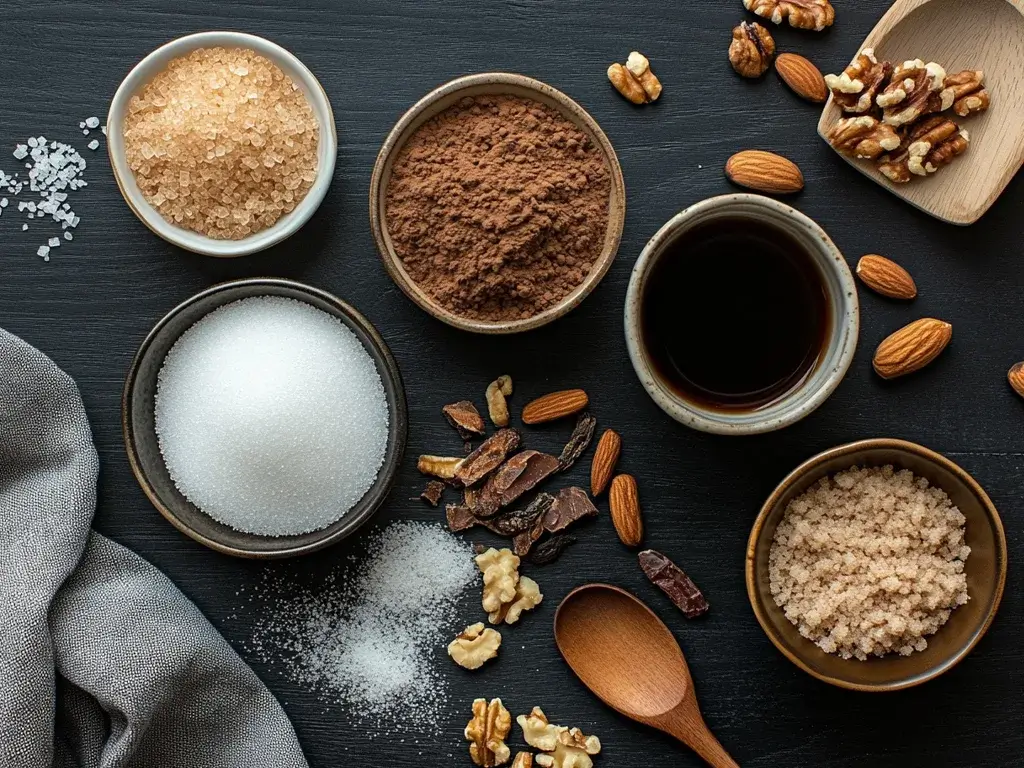
While the core ingredients set the foundation, it’s the additional components that bring out the true magic of a chocolate kefir sheet cake. From sweeteners to fats and special flavor enhancers, these ingredients create layers of taste and texture, making your dessert truly unforgettable.
Sweeteners: Traditional and Healthier Options
Sweeteners play a pivotal role in determining the cake’s overall taste. Whether you prefer traditional sugars or healthier alternatives, there are plenty of options to choose from.
White Sugar, Brown Sugar, and Natural Sweeteners
- White Sugar: This is the most common sweetener used in baking. It provides a clean, sweet flavor and contributes to a tender crumb.
- Brown Sugar: Brown sugar adds a deeper, caramel-like sweetness and moisture to baked goods due to its molasses content. It’s ideal for cakes where richness is desired.
- Natural Sweeteners: Healthier alternatives like honey, maple syrup, coconut sugar, and agave nectar are excellent choices for those seeking a refined sugar-free option. They add unique flavors and additional nutrients.
| Sweetener | Flavor Profile | Benefits |
|---|---|---|
| White Sugar | Sweet, neutral | Reliable texture and flavor balance |
| Brown Sugar | Rich, caramel-like | Adds moisture and depth of flavor |
| Honey or Maple Syrup | Sweet, complex, floral | Natural, with vitamins and minerals |
| Coconut Sugar | Mild, earthy sweetness | Lower glycemic index |
Adjusting Sweetness Levels for Taste and Health
For those aiming to reduce sugar intake, small adjustments can go a long way:
- Use a blend of white sugar and natural sweeteners to balance flavor and health.
- Reduce sugar by 10-20% without drastically impacting texture.
- Choose alternative sweeteners like stevia or erythritol for low-calorie options.
Remember, the sweetness of a cake is subjective, so feel free to adjust to suit your taste buds!
Leavening Agents: Baking Soda vs. Baking Powder
Leavening agents are essential for achieving a light, fluffy texture. In a chocolate kefir sheet cake, baking soda and baking powder both play unique roles:
- Baking Soda: This reacts with the acidity of kefir to produce carbon dioxide, helping the batter rise. It also enhances the rich, deep flavor of cocoa.
- Baking Powder: Baking powder is a combination of an acid and a base, which means it doesn’t rely on kefir’s acidity to activate. It provides additional lift, ensuring the cake rises evenly.
Using both leavening agents together ensures the cake has the perfect height and a tender, airy crumb. Always measure carefully, as too much can create an unpleasant aftertaste.
Fats and Oils: Butter, Coconut Oil, and Alternatives
Fats are crucial for adding moisture, flavor, and tenderness to your cake. The choice of fat can significantly influence the cake’s taste and texture.
- Butter: Adds a rich, classic flavor and creates a dense, moist cake. Opt for unsalted butter to control the sodium level.
- Coconut Oil: A dairy-free option that brings a subtle coconut flavor and smooth texture.
- Vegetable Oil: Provides moisture without altering the cake’s flavor. It’s a reliable option for ensuring a soft crumb.
For a healthier twist, consider these alternatives:
- Olive Oil: Adds a slightly fruity note, perfect for pairing with dark chocolate.
- Avocado Puree: A nutritious option that replaces fats while maintaining moisture.
- Greek Yogurt: Can be used to replace part of the fat, adding creaminess and protein.
Experimenting with these options allows you to customize the cake to your dietary needs without compromising on taste.
Enhancing Flavor with Additives
To take your chocolate kefir sheet cake to the next level, consider incorporating flavor-enhancing additives. These simple ingredients can transform a good cake into an exceptional one.
Vanilla Extract, Salt, and Coffee for a Richer Chocolate Flavor
- Vanilla Extract: A small amount of vanilla extract enhances the depth of the chocolate flavor, adding warmth and complexity.
- Salt: A pinch of salt balances the sweetness and intensifies the chocolate’s richness.
- Coffee: Adding a teaspoon of brewed coffee or espresso powder enhances the chocolate’s boldness without making the cake taste like coffee.
These subtle touches create a more refined flavor profile that delights the taste buds.
Optional Nuts, Seeds, or Fruits for Texture
For added texture and flavor, mix in nuts, seeds, or fruits:
- Nuts: Chopped walnuts, pecans, or almonds add crunch and a nutty undertone that complements the chocolate.
- Seeds: Sunflower seeds, chia seeds, or pumpkin seeds provide a nutritious crunch.
- Fruits: Fresh or dried fruits like raspberries, cherries, or shredded coconut can add bursts of sweetness and color.
These additions are optional but provide an opportunity to personalize the cake and add a delightful surprise with every bite.
By carefully selecting your sweeteners, leavening agents, fats, and flavor enhancers, you can create a chocolate kefir sheet cake that is perfectly balanced, rich in taste, and tailored to your preferences. Whether you stick to traditional ingredients or experiment with healthier alternatives, these additions ensure a moist, flavorful, and unforgettable dessert.
Frequently Asked Questions
What makes kefir a better choice than regular milk in baking?
Kefir is a fermented milk product packed with probiotics, vitamins, and minerals. Unlike regular milk, its acidity reacts with baking soda, creating a fluffier and lighter cake. Additionally, kefir adds a subtle tangy flavor and extra moisture, resulting in a soft, tender texture that’s hard to achieve with regular milk.
Can I use non-dairy kefir for a chocolate kefir sheet cake?
Yes, non-dairy kefir works perfectly for a vegan or lactose-free version of the cake. Options like coconut kefir, almond kefir, or oat-based kefir offer a similar tangy flavor and moisture without using dairy. Be sure to choose unsweetened non-dairy kefir to avoid altering the cake’s flavor balance.
What type of chocolate is best for a chocolate kefir sheet cake?
High-quality dark chocolate (at least 60% cocoa) or unsweetened cocoa powder works best. Dark chocolate provides a rich, intense flavor, while cocoa powder delivers a lighter, drier crumb. Combining both can create a perfectly balanced chocolate experience.
How can I make this cake gluten-free?
To make a gluten-free version of chocolate kefir sheet cake, use gluten-free flour blends that include xanthan gum for structure. Alternatively, almond flour, oat flour, or rice flour can also work well. Make sure to adjust the liquid content slightly, as gluten-free flours can absorb more moisture.
How do I store a chocolate kefir sheet cake?
Once the cake has cooled completely, store it in an airtight container at room temperature for up to 2 days. For longer storage, keep the cake in the refrigerator for up to 5 days, or freeze it for up to 3 months. Always bring refrigerated or frozen cake to room temperature before serving for the best taste and texture. For additional tips on properly storing cakes to maintain their freshness and flavor, check out this helpful guide on how to store cake.
Can I substitute kefir with other ingredients?
If you don’t have kefir, you can substitute it with buttermilk, plain yogurt, or sour cream. These ingredients have similar acidic properties that react with leavening agents, ensuring a moist and fluffy cake. However, kefir remains the ideal option due to its probiotic and nutritional benefits.
Conclusion
A chocolate kefir sheet cake is more than just another dessert—it’s a delicious blend of indulgence, creativity, and health benefits. By incorporating kefir, this cake stands out for its unique flavor, incredible moisture, and wholesome qualities. Whether you’re baking for a special occasion or simply treating yourself, this recipe offers a perfect balance of flavor, texture, and nutrition.
From selecting the finest ingredients, like rich dark chocolate and creamy kefir, to experimenting with sweeteners and gluten-free alternatives, you have countless ways to personalize this cake to suit your taste and dietary needs. For a detailed breakdown of all the essential ingredients, check out this guide on kefir sheet cake ingredients. Add in special touches like vanilla extract, a hint of coffee, or crunchy nuts, and you’ll create a dessert that’s truly unforgettable.
So, gather your ingredients, preheat your oven, and experience the magic of a chocolate kefir sheet cake. It’s a treat that proves dessert can be both indulgent and nourishing—one slice at a time!

